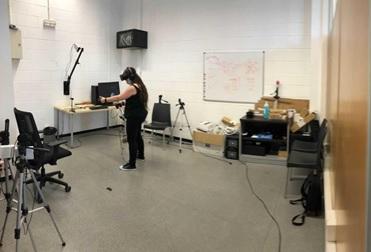Holoportation technology experience is now available through MED GAIMS-Spain: remotely-located people are playing a shared scenario

Thanks to technologies such as video-telephony and videoconferencing, people nowadays are remotely connected on a daily basis, Evident examples are services like Google Hangouts and remote multiplayer games with voice chat, transmitting every day huge volumes of data. Yet, the continuous evolution of video technologies focuses on other aspects, apart from those related to networking, like for instance 3D video paradigms and their constant improvements in terms of quality, sense of realism and immersion. The research community and industry have then started focusing on the development of novel systems to represent, compress and transmit 3D, or volumetric video, giving a strong importance to natural content.
As proof of relevance, this topic has recently attracted the attention of the Moving Pictures Experts Group (MPEG), initiating the very first Point Clouds compression standardization process. This evolution has also pushed the development of other key aspects, as real-time capturing and delivering of volumetric video. All the afore-mentioned advances, together, have opened the door to the Holoportation concept, enabling a real-time rendering of volumetric videos captured from remote locations.
In the framework of the MED GAIMS project, the i2CAT Foundation is starting to implement the Holoportation technology for remote multiplayer games. The Holoportation technology allows players to be fully immersed in a VR/AR/XR world, projecting their volumetric video representation, captured in real-time directly into the scenario. This application of the Holoportation concept could be the next level of a gaming experience, where players could interact and share the same game screen. Currently, the research center is finishing the design of two games with this technology for the Víctor’s Balaguer Museum in Vilanova i la Geltrú. The games are called UndergroundVR, and SoulsVR.









